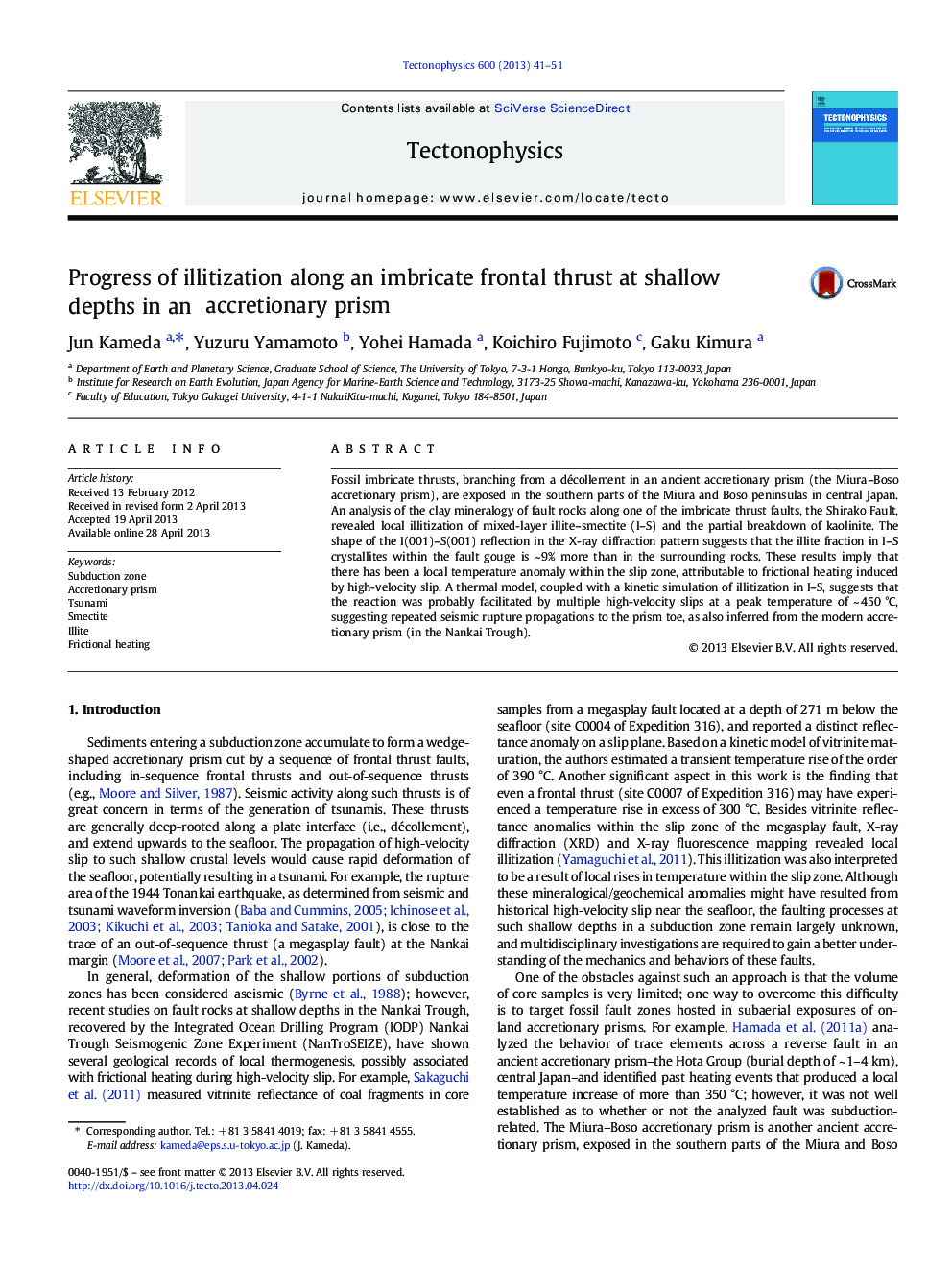| Article ID | Journal | Published Year | Pages | File Type |
|---|---|---|---|---|
| 4692216 | Tectonophysics | 2013 | 11 Pages |
•Fossil imbricate thrusts develop in the Miura–Boso accretionary prism, central Japan.•XRD analysis shows a local progress of illitization in the fault gouge.•The observed reaction can be explained by repeated frictional slips.•Such slip events along the faults may have been tsunamigenic.
Fossil imbricate thrusts, branching from a décollement in an ancient accretionary prism (the Miura–Boso accretionary prism), are exposed in the southern parts of the Miura and Boso peninsulas in central Japan. An analysis of the clay mineralogy of fault rocks along one of the imbricate thrust faults, the Shirako Fault, revealed local illitization of mixed-layer illite–smectite (I–S) and the partial breakdown of kaolinite. The shape of the I(001)–S(001) reflection in the X-ray diffraction pattern suggests that the illite fraction in I–S crystallites within the fault gouge is ~ 9% more than in the surrounding rocks. These results imply that there has been a local temperature anomaly within the slip zone, attributable to frictional heating induced by high-velocity slip. A thermal model, coupled with a kinetic simulation of illitization in I–S, suggests that the reaction was probably facilitated by multiple high-velocity slips at a peak temperature of ~ 450 °C, suggesting repeated seismic rupture propagations to the prism toe, as also inferred from the modern accretionary prism (in the Nankai Trough).
